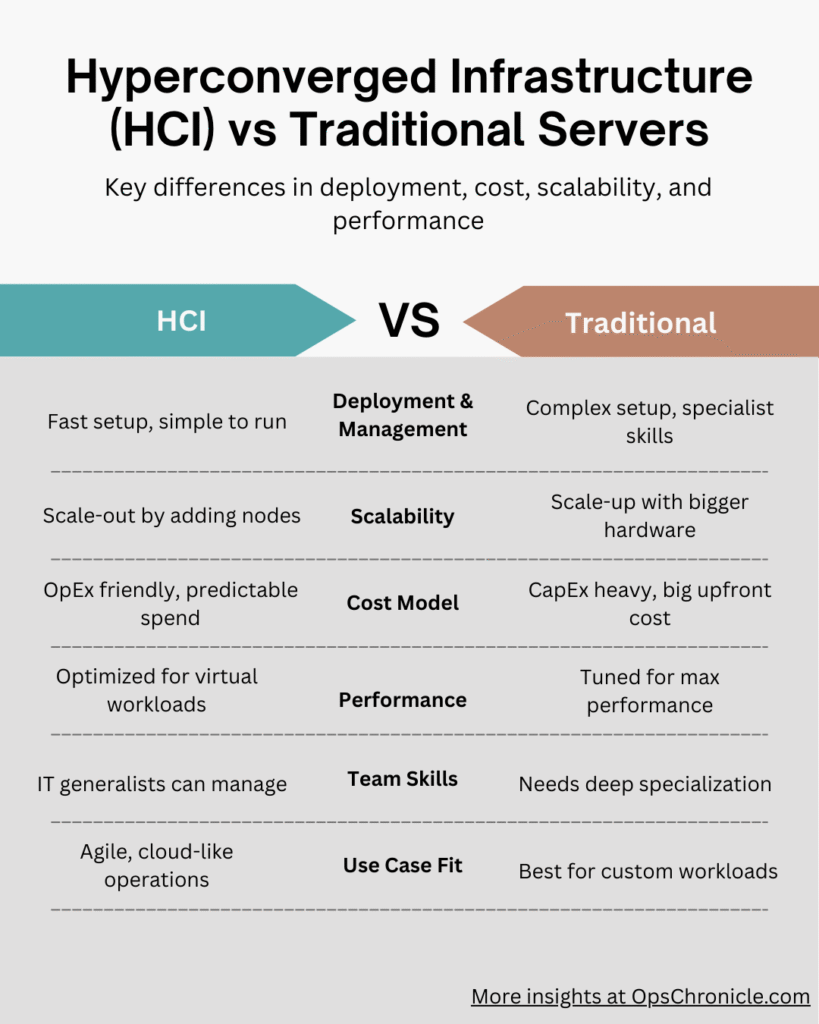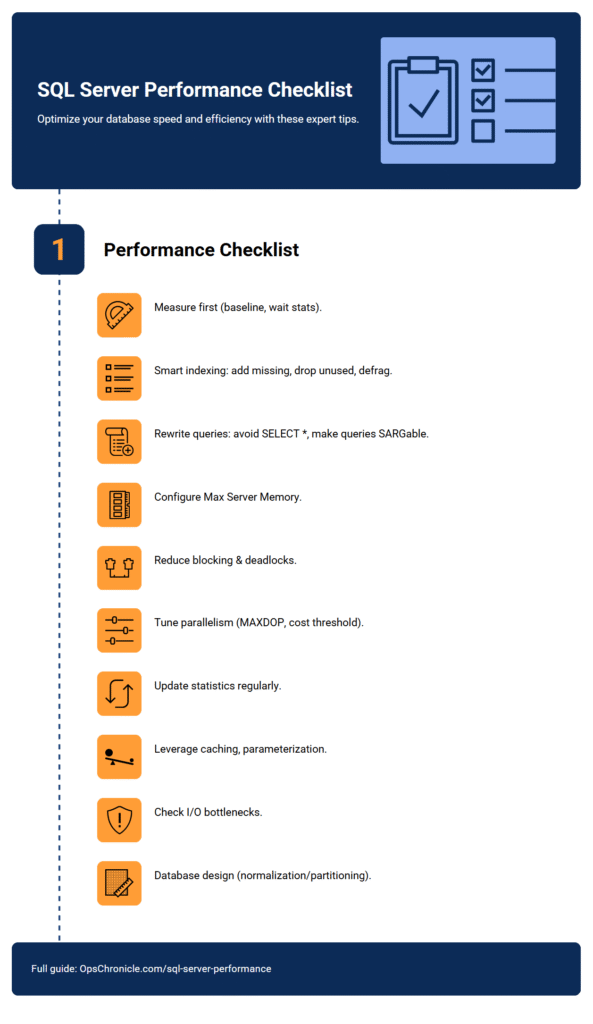Hyperconverged Infrastructure vs Traditional Servers: Which Is Right for Your Business?
You’re staring down a critical decision for your company’s IT backbone. Do you stick with the familiar, three-tiered architecture of traditional servers, or do you leap into the modern, integrated world of hyperconverged infrastructure (HCI)?
It’s not just a tech choice; it’s a business strategy decision that impacts your budget, agility, and security for years to come.
As your infrastructure evolves, getting this wrong can mean massive unexpected costs, painful complexity, and an inability to keep up with market demands. But getting it right can be a game-changer, freeing up your team to innovate instead of just keeping the lights on.
Let’s cut through the hype and break down the real-world differences between HCI and traditional servers, so you can make the most informed choice for your business.
The Core Difference: Integrated vs. Disaggregated
Think of it like buying a sound system.
A Traditional IT Infrastructure (or a three-tier architecture) is like buying separate, high-end components: an amplifier from one brand, speakers from another, and a subwoofer from a third. You get best-of-breed performance and flexibility, but you’re on the hook to assemble, wire, and configure everything to work together. This is your classic setup of discrete servers, storage arrays (SAN/NAS), and networking switches.
Hyperconverged Infrastructure (HCI) is like buying a premium, all-in-one soundbar with a wireless sub. It’s a pre-integrated system where compute, storage, and networking virtualization are bundled into a single, software-defined solution running on commodity hardware. It’s managed from a single pane of glass.
This fundamental difference ripples out to affect everything else.
Head-to-Head: Where They Really Differ
Let’s get tactical. Here’s how these two stack up where it matters most.
1. Deployment and Management: Agility vs. Granular Control
- HCI: Wins on simplicity and speed. You can spin up a new node and have it integrated into your cluster in minutes. Management is unified, drastically reducing the operational overhead. Your IT generalists can handle most tasks without needing deep, specialized knowledge in storage or networking. It’s the king of “set it and forget it” operations.
- Traditional: Offers unparalleled granular control. Your storage admins can fine-tune the SAN for specific workloads, and network engineers can optimize every switch setting. This is powerful but comes at a cost: complexity. Deployment is slower, and troubleshooting can be a multi-team effort, leading to finger-pointing between silos.
2. Scalability: Scale-Out vs. Scale-Up
- HCI: Built for scale-out growth. Need more resources? Just plug in another identical node. The software automatically absorbs the new compute and storage capacity into the shared pool. It’s modular and predictable. However, you often have to scale compute and storage together, even if you only need one of them.
- Traditional: Built for scale-up power. If an application needs more raw CPU or memory, you buy a bigger, more powerful server. If you need more storage, you add shelves to your SAN. This allows for massive, asymmetric scaling but requires careful capacity planning and can lead to resource silos and over-provisioning.
3. Cost Structure: OpEx vs. CapEx
- HCI: Often leans towards an Operational Expenditure (OpEx) model. With many vendors offering subscription-based software licensing and pre-integrated hardware, costs become more predictable and are spread out over time. The big savings, however, are in operational costs—you need fewer staff hours to manage it.
- Traditional: Traditionally a Capital Expenditure (CapEx) model. Large upfront costs for hardware, followed by separate software and support contracts. While the initial hardware price per unit might be lower, the total cost of ownership (TCO) can be higher due to complex management, power/cooling, and specialized admin costs.
4. Performance and Flexibility
- HCI: Performance is excellent for general-purpose virtualized workloads (VDI, databases, applications). Modern HCI has made huge strides here. However, it can be less ideal for ultra-high-performance applications that require dedicated, non-virtualized access to hardware (like specific GPUs or NVMe drives).
- Traditional: Offers ultimate flexibility and raw performance for specialized needs. You can build a monster server for a massive database or a dedicated all-flash SAN for lightning-fast storage I/O. You’re not constrained by the hyperconverged model.
So, Which One is Right for YOUR Business?

This isn’t about which technology is “better.” It’s about which is better for you.
Choose Hyperconverged Infrastructure (HCI) if:
- You want to simplify IT operations and reduce management overhead.
- Your team has more generalist skills than deep storage/network specialists.
- You need to scale quickly and predictably (e.g., for rapid business growth or new branch offices).
- Your workloads are primarily virtualized and general-purpose.
- You prefer a predictable, subscription-based cost model (OpEx).
Choose Traditional Three-Tier Infrastructure if:
- You have specialized, high-performance workloads that need bespoke hardware tuning.
- You require maximum flexibility to mix and match best-of-breed components from different vendors.
- You have in-house specialists dedicated to managing each layer (server, storage, network).
- Your scaling needs are asymmetric (e.g., you need a huge amount of storage without additional compute).
- Your finance department prefers large upfront capital investments (CapEx).
The Bottom Line
The trend is clearly moving towards convergence and software-defined everything. HCI is the dominant force for modern, agile businesses looking to streamline operations and accelerate innovation.
However, traditional infrastructure is far from dead. It remains the powerhouse for large enterprises with massive, varied, and performance-intensive applications that require precise, granular control.
Your best bet? Start with your applications. Work backwards from their specific requirements, your in-house skills, and your long-term business goals. That will tell you which path to take.
FAQ Section
Q: Can HCI handle mission-critical applications?
A: Absolutely. Modern HCI platforms are enterprise-grade and are commonly used to run critical databases, ERP systems (like SAP), and virtual desktop infrastructure (VDI). Their high availability and built-in data protection features make them highly resilient.
Q: Is HCI more expensive than traditional servers?
A: Initially, the hardware and software cost for HCI can be higher per unit. However, the Total Cost of Ownership (TCO) is often significantly lower due to drastically reduced management overhead, faster deployment times, and more efficient use of resources.
Q: Can I mix HCI with my existing traditional infrastructure?
A: Yes. Most companies don’t rip and replace. HCI can be deployed alongside your existing three-tier systems, often to host new applications or modernize a specific part of your data center. They can coexist and even be managed together in some hybrid cloud scenarios.
Q: Does HCI lock me into a single vendor?
A: This is a common concern. Early HCI did have vendor lock-in. Today, the market is more open. While you typically buy an integrated system from one vendor, many software platforms (like VMware vSAN) can run on certified hardware from multiple server manufacturers, giving you more choice.
Q: Is HCI the same as the cloud?
A: Not exactly, but it’s a stepping stone. HCI creates a cloud-like experience on-premises with its agility, scalability, and consumption-based model. It’s a fundamental building block for hybrid cloud strategies, allowing you to easily move workloads between on-prem and public cloud.
No post found!

